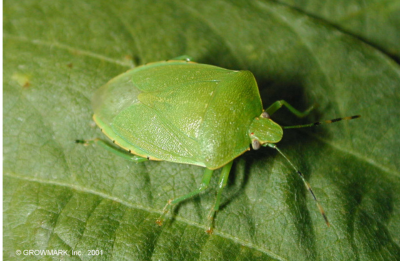 Image 1: Green stink bug adult. (Source: GROWMARK, Inc.)
Image 1: Green stink bug adult. (Source: GROWMARK, Inc.)
- Stink bugs can be late season pests on soybeans.
- Late season feeding on pods and beans can increase seedborne diseases and reduce quality.
- Scouting and management through R5 is important for reducing potential related impacts.
Biology
Stink bugs have become an increasingly common late-season pests in soybeans. Stink bugs are shield-shaped insects and may emit an offensive odor if handled. There are many species of stink bugs, but the species most commonly found in Midwest soybeans are: the green stink bug, the brown stink bug, and the brown marmorated stink bug. The green stink bug is the most common among these (Image 1).
Stink bugs exhibit gradual metamorphosis, with three life stages: egg, nymphs, and adults. Eggs are barrel-shaped and found on the underside of the soybean leaf. The immature nymphs resemble the adults, but lack fully developed wings and often vary considerably in color (Image 2). Less experienced field scouts may sometimes misdiagnose the nymphs as a different species of insect.
Crop Damage
Stink bugs are typically a minor pest in soybeans, but high populations can cause losses in both yield and quality of soybeans. Stink bugs feed with piercing-sucking mouthparts on tender stems, petioles, and the developing beans, themselves. They inject enzymes to liquefy the plant tissue, which can cause shriveled, small soybeans. Germination of seed soybeans may also be affected, even when seed looks normal. Stink bug injury may also lead to green stem syndrome.
Scouting and Thresholds
Stink bugs typically appear from mid-July through harvest. Scout soybeans for stink bugs in growth stages R1 through R5. Adults tend to aggregate, so rigorous sampling over several areas of the field may be needed for an accurate assessment. Keep in mind that samples from near woods or fence rows may have higher counts.
A beat cloth may be useful to scout 30-inch rows, whereas a sweep net may be more convenient in narrow rows. A generally accepted threshold for stink bugs in soybeans is 1.0 per linear foot of row for commercial soybeans, or 0.5 per foot of row in seed production. The threshold for the sweep net method is 8 per 20 sweeps in production soybeans and 4 per 20 sweeps in seed beans. The thresholds should be considered dynamic and may be adjusted to reflect the presence of other late-season insects and market economics.
Management
Most insecticides labeled for use on soybeans will provide effective stink bug control. Endigo and Leverage both contain neonicotinoid active ingredients that provide systemic activity, which may be an advantage for insects that feed with piercing-sucking mouthparts. Be cognizant of pre-harvest intervals (PHI) when applying insecticides later in the growing season. Always read and follow label directions.

Image 2: Green stink bug egg mass on the underside of a soybean leaf. (Source: GROWMARK, Inc.)

Image 3: Green stink bug nymphs on a soybean pod (Source: GROWMARK, Inc.)